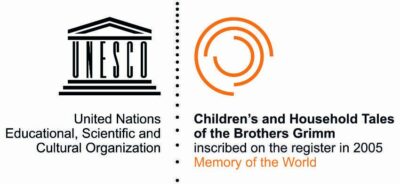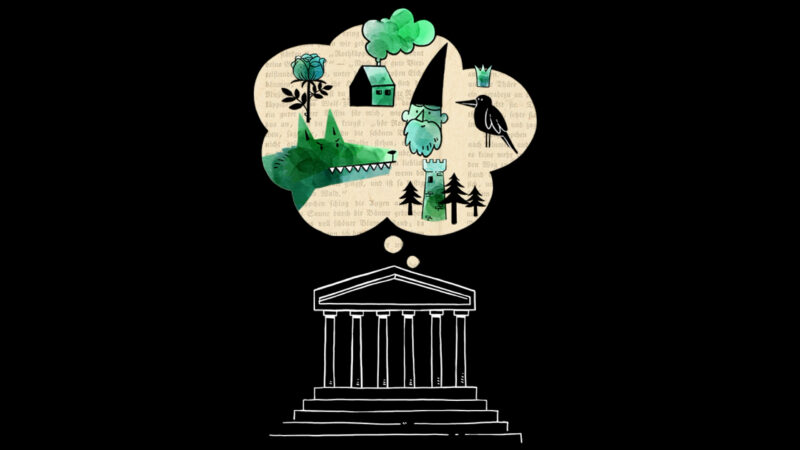- Menu
- Today
-
Next event
»Tunnelbücher selbst gestalten«
OsterferienprogrammSpecial Exhibition
Light-Pictures
Permanent Exhibition
GRIMMWELT adventure space
Known and loved all over the world
© Grimm-Sammlung der Stadt Kassel | Rotkäppchen: 8°_Grimm_0079-1 | Brüder Grimm Kinder- und Hausmärchen Handexemplare 1812
The Grimms started collecting fairy tales from their base in Kassel in 1806. Six years later, the first edition of the “Children’s and Household Tales” was published just before Christmas. This edition still included comments and fragments of text which were intended to encourage the reader to play an active part in the collection. Extensive editing took place before the illustrated “Small Edition” – which brought the Brothers world renown – was published in 1825.
The main sources of the material for the Tales were bourgeois or aristocratic ladies who, in turn, had heard the tales from servants, farmers and merchants. The most important source was Dorothea Viehmann, whose vast knowledge of local and regional stories was matched by an almost “ready-to-print” storytelling style.
There was extensive critical scrutiny of the evolution of the “Children’s and Household Tales”, which the Brothers Grimm intended as a folkloric document and educational children’s book. Classed as dubious children’s literature after the Second World War, they have now been fully rehabilitated as a valid vehicle to convey an optimistic, confident view of the world in an educational context.
© GRIMMWELT Kassel | Photo: Nikolaus Frank
The Brothers Grimm’s personal copies with hand-written notes and corrections, known as the "personal copies" of 1812/1815, were added to the UNESCO list “Memory of the World” in 2005.
![B | BUCH [BOOK] | UNESCO World Heritage - Author's edition of the Children's and Household Tales | Copyright: Stadt Kassel Authors editions of the Children's and Household Tales with handwritten notes by the Brothers Grimm.](https://www.grimmwelt.de/files/images/~/02_Ausstellungen/01_Dauerausstellung/_imageDefault_md/B-Buch-Unesco-Welterbe_Kinder-und-Hausmaerchen_Copyright_Stadt_Kassel.jpg)
![B | BUCH [BOOK] | Photo: Nikolaus Frank View of the display case with the author's copies of the Children's and Household Tales in the exhibition area "Book".](https://www.grimmwelt.de/files/images/~/02_Ausstellungen/01_Dauerausstellung/_imageDefault_xs/Buch_c-GRIMMWELT-Kassel_Foto_Nikolaus-Frank.jpg)

